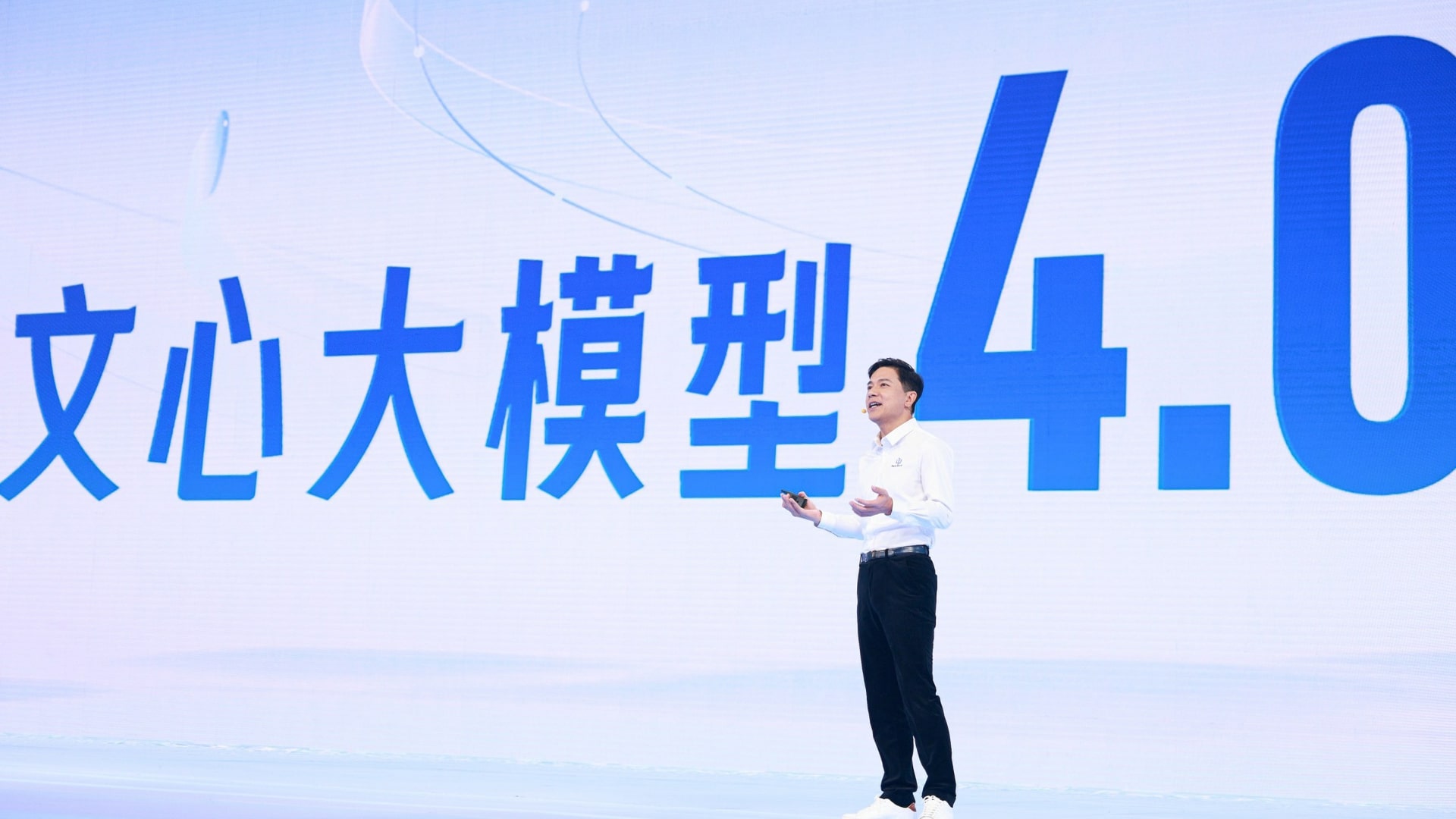On May 16, Baidu unveiled its financial report for the first quarter of 2024. The report revealed that Baidu pulled in a revenue of RMB 31.5 billion (USD 4.3 billion), with a net profit (non-GAAP) of RMB 7.011 billion (USD 970 million), marking a 22% year-on-year increase. Net profit of Baidu Core (non-GAAP) also grew 26% year-on-year to RMB 6.628 billion (USD 917.1 million).
Artificial intelligence is orchestrating a comprehensive makeover at Baidu, going beyond mere product or model launches to fundamentally reshaping the company’s product logic.
During the earnings call, Baidu’s co-founder, chairman, and CEO, Robin Li, reiterated the company’s pivot from an internet-centric business to an AI-first business. In this shift, search, cloud services, and autonomous driving stand out as prime examples among Baidu’s myriad AI-driven ventures.
Search lies at the heart of Baidu and directly influences its competitive edge. According to Li, search holds the potential to play a decisive role in the AI era.
AI is transforming how users interact with search engines, providing more direct and precise responses to user queries. The introduction of Ernie, also known domestically as “Wenxin,” has enriched Baidu’s content ecosystem and elevated user experience through personalized and precise search results. Recent data indicates that currently, 11% of Baidu’s search results are AI-generated.
It’s noteworthy that these AI-generated search results exclude advertisements. While this may momentarily impact advertising revenue, in the long run, it is expected to significantly enhance user engagement, increase search usage and duration, and consequently boost the overall platform’s content ecosystem and commercial value.
Beyond regular users, an increasing number of small and medium enterprises are embracing Baidu’s Ernie. Presently, Ernie is being utilized millions of times daily in various ways, spanning verticals such as education, law, B2B, and tourism, to enhance efficiency. Take, for instance, the home furnishing brand Sogal, which has tapped into Ernie’s capabilities to address user queries, elicit specific requirements from users, recommend visits to offline stores, and reduce lead generation costs.
According to Goldman Sachs, Baidu could rake in incremental revenue of approximately RMB 3–6 billion (USD 415–830 million) from enterprise users and advertisers adopting its AI solutions in 2024.
AI has also emerged as a pivotal driver for Baidu’s cloud business. During the earnings call, it was revealed that, in the first quarter of 2024, Baidu Intelligent Cloud recorded RMB 4.7 billion (USD 650.3 million) in total revenue (non-GAAP), 12% higher year-on-year. The revenue contribution from generative AI reached 6.9% and is steadily increasing.
According to Li, model inference represents one of the crucial long-term opportunities and a key driver of Baidu’s cloud business. Currently, the Ernie large model processes approximately 250 billion tokens worth of text daily, spread across around 200 million prompts. Additionally, following Samsung and Honor, the latest quarter saw Oppo, Vivo, Xiaomi, Lenovo’s computer business, and Nio all integrate Ernie’s API.
Throughout the quarter, Baidu continued to refine its AI-native application development tool, AppBuilder, and model customization tool, ModelBuilder, for its cloud business. It also rolled out three lightweight models, Ernie Speed, Ernie Lite, and Ernie Tiny, and two specific scenario-based models, Ernie Character, and Ernie Functions, further lowering the threshold and cost of AI application development.
Specifically, through AppBuilder, developers can craft an AI-native application in three steps using natural language and seamlessly publish it, integrating it into various business environments.
With ModelBuilder, enterprises can develop applications using a mixture of experts (MoE) approach, achieving faster response speeds and lower inference costs while maintaining performance levels.
For example, Xiaodu’s Tiantian tablet robot uses a lightweight version of the model to handle general inquiries and only employs Ernie 4.0 for arithmetic questions, resulting in a twofold speed increase and a 99% cost reduction.
It’s worth noting that, while the surge in AI demand has led to a spike in GPU cloud usage, what has truly expanded the imaginative space for Baidu’s cloud business is the widespread acknowledgment of AI computing power, which can further drive CPU cloud usage. Thanks to the high recognition of GPU clouds among new and existing customers, clients are increasingly shifting their CPU cloud usage to Baidu’s public cloud.
In the realm of autonomous driving, with Tesla’s Robotaxi announcing its foray into China, the era of unmanned taxis is on the horizon. Although achieving point-to-point autonomous driving is now technically feasible, Baidu remains the only company in China currently capable of supporting fully unmanned autonomous driving. ASD, as the core technology of Baidu’s Apollo Go (known as Luobo Kuaipao in Chinese) is currently the sole rival of Tesla’s Full Self-Driving (FSD) package in China.

During Baidu’s Apollo Day on May 15, the company unveiled Apollo ADFM, which it claimed to be the world’s first large model capable of supporting Level 4 autonomous driving. Simultaneously, it introduced the sixth generation of its Apollo Go robotaxi, priced at RMB 200,000 (USD 27,670), over 50% lower than the previous generation.
Presently, Apollo Go has completed over 6 million trips nationwide. In Wuhan, its service area has expanded to 3,000 square kilometers, serving a population of 7.7 million round the clock.
The latest generation of Apollo Go integrates Apollo ADFM across its hardware and security architecture, enhancing vehicle stability and reliability, with safety redundancy and minimal risk condition (MRC) levels approaching those of domestically produced large aircraft like the C919. With the completion of Apollo Go’s operations network, operating costs are also expected to decrease by 30%, and services costs could plummet by as much as 80% through continuous self-driving vehicle cabin technology optimizations.
KrASIA Connection features translated and adapted content that was originally published by 36Kr. This article was written by Xiao Xi for 36Kr.

